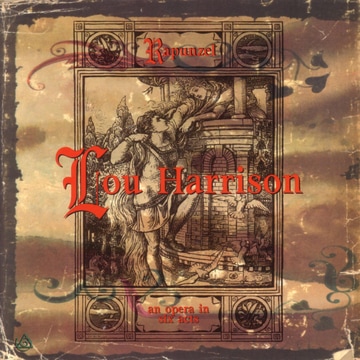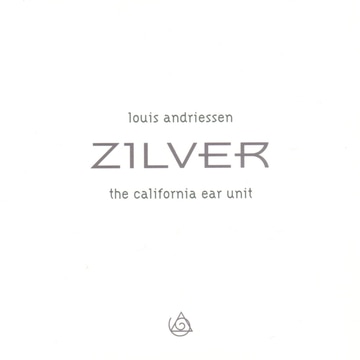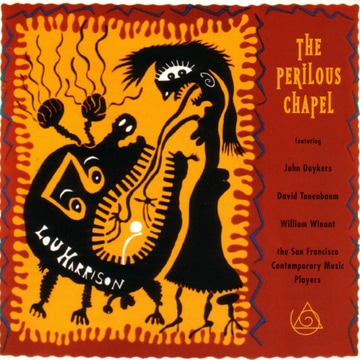|
Rapunzel: an opera in six acts and other owrks
Patrice Maginnis, soprano; Lynne McMurty, mezzo-soprano; John Duykers, baritone; William Winant, percussion; Leta Miller, flute; Susan Brown, violin; Josephine Gandolfi, piano; Ensemble Parallèle; Nicole Paiement, conductor [Of the work's] varied array of instrumental sonorities ... There was no austerity ... but a continuity which was lyric and, when desired, pungent, along with a pervasive and convincing sensitiveness. --Herald Tribune From the Black Mountain College period (1951-1953) date the quartet Songs in the Forest as well as the opera Rapunzel. Rapunzel's six scenes were the product of an intensive effort over a period of less than three months from August to October 1952, although the subsequent orchestration required his efforts well into the following year. Based on a psychological reinterpretation of the old fairy tale by the 19th century English poet William Morris, the work is set for chamber orchestra and three solo singers who declaim in serial language that is at once jagged and lyric. Harrison describes the opera as "in part self-analysis," holding "implicit in it some of the problems, tortures, and false rapture that I was myself experiencing in analysis and psychotherapy." In 1954 the Air from Rapunzel (Act 3) won a Twentieth Century Masterpiece Award for the best composition for voice and chamber orchestra at the International Conference of Contemporary Music in Rome. Available here: Groove Zilver
The California EAR Unit Zilver; Disco; Overture to Orpheus; Worker’s Union No composer can provoke, jolt and threaten the system better than Mr. Andriessen, who has been practicing those skills for his entire career ... --The New York Times The basic idea of Zilver is to write a chorale variation like Bach did for the organ: a long melody in slow musical motion, combined with fast playing of the same melody. The slow playing of the melody, which is a pop song that nobody will recognize, is done by the winds and the strings; they also play in slow four-part harmony, like a chorale. The rest of the instruments -- the two percussion players, playing on keyboard instruments (vibraphone and marimba), and the piano -- play staccato chords, and these staccato chords become faster and faster all the time. Basically the ensemble is divided into these groups, and the two groups play canons that are combined together. Zilver also seems to be a part of a series of chamber music pieces named for certain kinds of matter: Hout which means 'wood', could be the first, and Zilver could be the second one. ("Zilver" means 'silver' in Dutch.) The title probably also has to do with the fact that the two silver instruments -- flute and vibraphone -- start and end the piece. Zilver was written for the California EAR Unit. Disco was written in 1982 on a commission from the Dutch government. The outer sections of the piece occupy the sound environment of the 'hyper-instrument' created when both instruments play in unison, while the static inner section explores the ringing overtones of sympathetic strings in the piano. Worker's Union (1975) is a 'symphonic movement for any loud sounding group of instruments.' It is from the same period as Andriessen's Hoketus and shares many similarities with that work. Most notably, it is built of short rhythmic cells which are repeated varying numbers of times. However, in this work there are no specific pitches until the very end of the piece. Instead, the notated rhythms are played precisely, with the pitch content consisting of contours depicted relative to a horizontal line representing the middle register of a player's instrument. The instructions are 'to make the piece sound dissonant, chromatic, and often aggressive.' And only in the case that every player plays with such an intention that his part is an essential one, the work will succeed; just as in the political work.' --Louis Andriessen and the California EAR Unit Available here: iTunes HDtracks The Perilous Chapel
David Tanenbaum, guitar; William Winant, percussion, San Francisco Contemporary Music Players; John Duykers, tenor Harrison has pursued his iconoclastic vision since the '40s, evolving a colorful, almost mystical vocabulary that melds the unorthodox textures of Henry Cowell and early John Cage with a love of repetition and clean diatonicism that foreshadowed minimalists Steve Reich and Philip Glass. --Guitar Player Please note: in the spring of 2003 this title was discontinued when the guitar works were reissued with additional music on Lou Harrison's "Serenado" [NA123] In the late thirties of this century and the early forties I was, as have been many Californians, enamored of Mexico. At about this time a small book of reproductions from Mexican codices, all in color, came into my possession, and I immediately wanted to do something about the life of the culture-hero Quetzalcoatl which was there depicted. It was also a period in which one or two films were made in which the camera explored a painting in detail with musical accompaniment. Thus I immediately thought of such a thing in connection with the Mexican codices. I did not have any access to film at the time, but went ahead enthusiastically to the composition of a score. This must have been a hint to Eric Marin a few years ago, for in the excellent film about me and Bill, "Cherish, Conserve, Consider, Create", he made a passage in which part of the score is used with still photos of Mexican architecture and people. I still think that a complete film could be made based on my original idea, but in any event the score, which is played with fair frequency, I like to think reminds audiences of the extraordinary and often very beautiful civilization of Mexico and its pre-Columbian history. We first performed the work in San Francisco, and I believe that that was in the concert that John Cage and I gave in the California Hall - the concert which was concluded by the "Double Music" which he and I composed together and which resulted in the first public recording of one of my works for percussion ensemble. --Lou Harrison Available here: iTunes |
New Albion Records, Inc.Archives
October 2010
|



